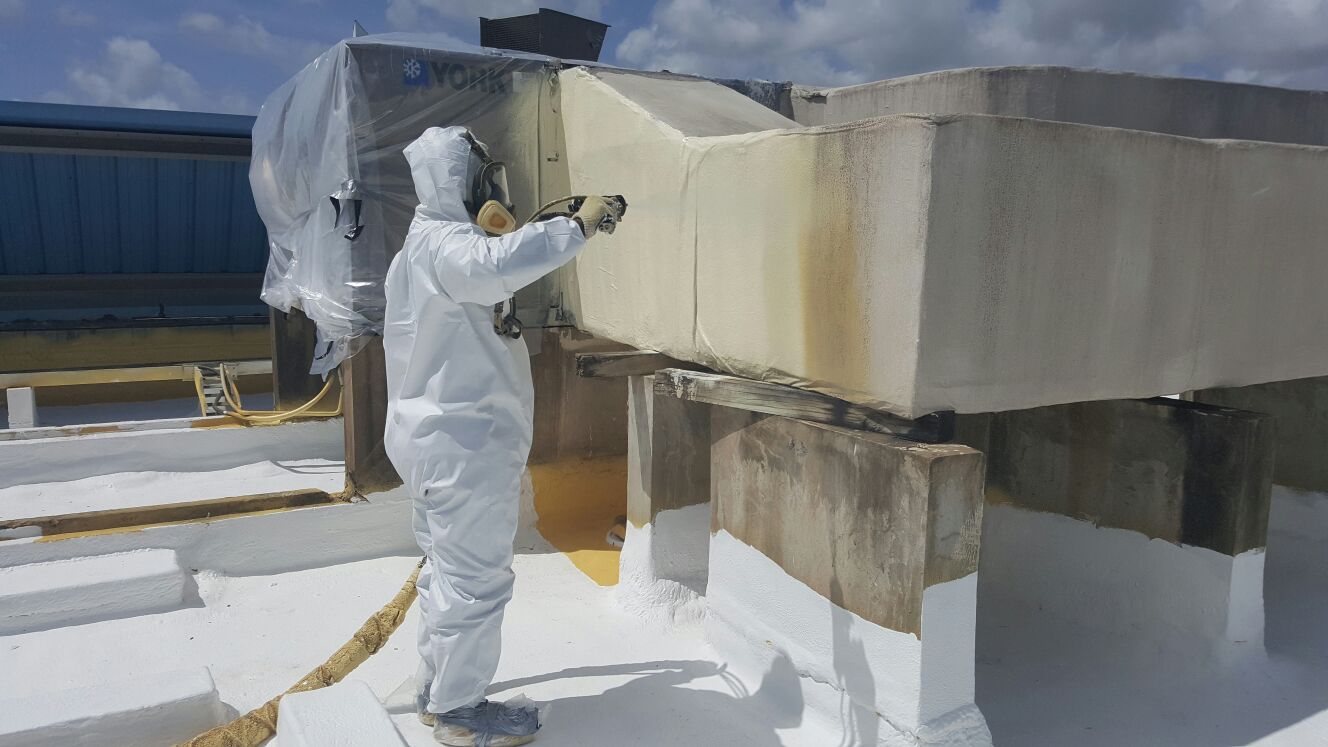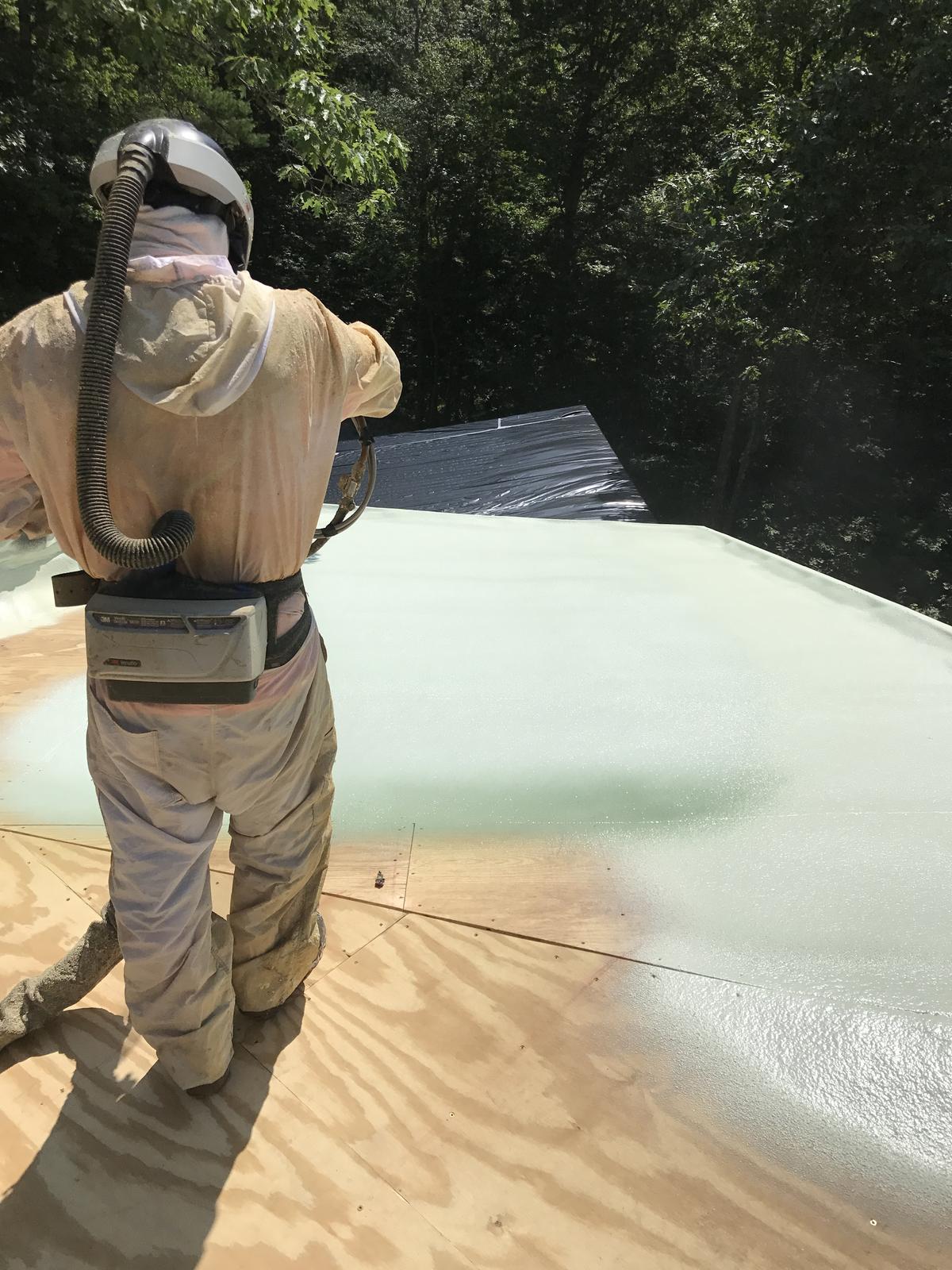Spray Foam Roofing
Spray Polyurethane Foam Roofing Systems
What are the benefits of using a spray foam roofing system?
SPF Roofing systems from Webb Insulation reduce energy costs and will add improved total R-Value to the roof. White, Tan, or Grey finishes are available. White is the most reflective, which will reduce energy consumption coupled with the high R-Value of the foam monolithic leak-free barrier from the elements.
If it is time to put a new roof on your building, a spray foam roof will allow you to save additional money in heating and cooling costs. It adds an R-Value of about 6.5 per inch. In new construction applications, you can have the spray foam applied thicker to meet the insulation value you need and save money by not requiring insulation under your roof deck.
Another great benefit of spray foam roofing system is that it can be applied right over the top of many different existing roofing systems. This saves the extra labor costs and is more environmentally friendly. It also keeps the old roof in place and out of landfills. If your building’s current insulation is adequate, we can apply a silicone coating that will leave your roof leak-free for many years to come and lower cooling costs due to the highly reflective color options.
What is SPF roofing?
A 3lb high density closed cell foam sprayed on as a liquid that tenaciously bonds itself to the substrate and instantly expands into the foam. It can be sprayed in several passes to build a slope to drain and build up low areas for a uniform self-flashing roof system. SPF is water-resistant but must be covered by an elastomeric coating to protect from UV rays. SPF roofing systems can last many years with proper maintenance and recoating every 10 – 15 years. Roofs should be inspected twice per year for damage from large hail or other mechanical damage.
What is done to determine if SPF can be applied to existing roofing and what kind of roofs can be foamed or coated?
Core samples for adhesion and moisture content. Metal roofing, EPDM (also known as rubber roofing), TPO (Thermoplastic Polyolefin), Modified Bitumen, BuR (built-up roofing), PVC (Poly Vinyl Chloride), as well as Shingles. It can all be covered with SPF roofing systems.
Will wind damage an SPF roof?
SPF roofing has excellent wind uplift resistance. It is great for extreme weather conditions and severe weather for both residential and commercial buildings. It adheres and contours to the roof surface. It is self-flashing. Another benefit of spray foam roofing is there are no fasteners, as it adheres directly to the roof. Roof fasteners can cause up to 30% heat loss from a structure due to thermal bridging in a conventional roofing system.
Warranties for Spray Foam Roofing Systems
There are various warranties that you can get along with a spray foam roof, but most will depend on the system you use and what the manufacturer will warranty it for. Many warranty programs will include the customer needing to have us come in once a year, check your roof, and repair any potential problems.
Different Topcoats
The top coat that goes over the spray foam on your roof seals it all up. The topcoat is applied over the spray foam to protect it from the UV rays and prevent any leaks from occurring. The different types of Topcoats include an acrylic coating, a silicone coating, or polyurea. Which topcoat we use will usually be depending on what the manufacturer specifies to get you the best warranty.
Webb Insulation believes silicone is the best coating option for the extreme weather conditions in Maine. We cover the entire state of Maine with our SPF roofing and coating systems. Please contact us for a free estimate.
Contact Us

